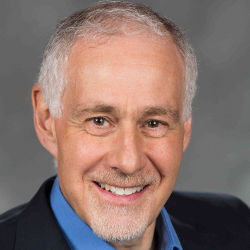
As my tenure as ACM president ends, I find myself reflecting on the past two years and so I looked back at my 2014 election position statement.
[W]e must confront the reality that what ACM contributed to the computing profession for more than 65 years might not sustain it in the future …
ACM was formed in 1947 by a small group of scientists and engineers who had helped usher in the computer age during World War II. They saw ACM as a means for professionals, primarily mathematicians and electrical engineers, to exchange and curate technical information about "computing machinery." The fact that ACM is now home to a much broader community of interests, with members literally spanning the globe, was likely well beyond their imagination.
Conferences and publications remain the primary means by which our organization sustains itself. I worried in 2014 that revenue would eventually fall, and that we needed to prepare. I pointed out in a 2015 Communications letter that conference surpluses go directly back to the SIGs, while publication surpluses are used to subsidize the entire enterprise: allowing student members everywhere, and reduced-rate professional members in developing regions, to receive full member benefits; contributing an additional $3M per year to the SIGs; and supporting in entirety our volunteer-driven efforts in education, inclusion, and public policy. The specter of open access undercutting the library subscription business created many uncertainties, some of which remain to this day.
Two years on, some things are coming into better focus, giving hope that conferences and publications will remain viable revenue sources.
As it turns out, the popularity of our conferences continues to rise with overall conference attendance steadily increasing. I attribute this to the growing importance and influence of computing, and the broadening of ACM’s constituency and audience.
We have empowered authors and conference organizers with new open access options. Yet the uptake of Gold ("author pays") open access is surprisingly slow and the growth of the subscription business is surprisingly robust. Perhaps most profound is the realization that the marketable value of ACM’s Digital Library derives not so much from access to individual articles, as from access to the collection and the services that leverage and enhance the collection. In other words, ACM sells subscriptions to a collection, so in a sense open access to articles is not the immediate threat. Moreover, there is a potential future business to be built around government mandates for open data, reproducible computation, and digital preservation generally that takes us far beyond today’s simple PDF artifact and collection index.
We must recognize that the nature of community, community identity, and "belonging" is evolving rapidly …
What is the value of being formally associated with ACM? This seemingly simple and fundamental question comes up so often that the answer should be obvious and immediate. Twenty years ago, perhaps it was. Today, although I personally feel the value, I struggle to articulate an answer that I am confident will convince someone new to the community already engaged with others through means falling outside the traditional ACM circle.
What I do know is that remarkably few people are aware of the important and impactful volunteer activities beyond conferences and publications that are supported by ACM. This seems to be the case whether the person is one of our more than 100,000 dues-paying members or one of the millions of non-dues-paying participants and beneficiaries in ACM activities.
That is why I sought to "change the conversation" around ACM, from merely serving as computing’s premier conference sponsor and publisher to also being a potent and prominent force for good in the community. My goal was to raise awareness that ACM, as a professional society, offers a uniquely authoritative, respected voice, one that can amplify the efforts of individuals in a way that an ad hoc social network cannot. That ACM and its assets are at the disposal of its members and volunteer leaders to drive its agenda forward. And that being a member of this organization is a statement in support of that agenda. Getting this message out is largely about how ACM presents itself to the world through its communication channels, which are in the process of a long-overdue refresh.
ACM’s services and programs are founded on three vital pillars: energetic volunteers, dedicated HQ staff, and a sufficient and reliable revenue stream …
The most rewarding experiences I had as president were visits with the many communities within the community that is ACM: SIGs, chapters, boards, and committees. Each different, yet bound by a commitment to excellence that is our organization’s hallmark. Enabling those communities is a professional staff as passionate about ACM as its members. They deserve our thanks and respect.
As I end my term, I wish the next president well in continuing to move the organization forward. You have great people to work with and an important legacy to continue.



Join the Discussion (0)
Become a Member or Sign In to Post a Comment